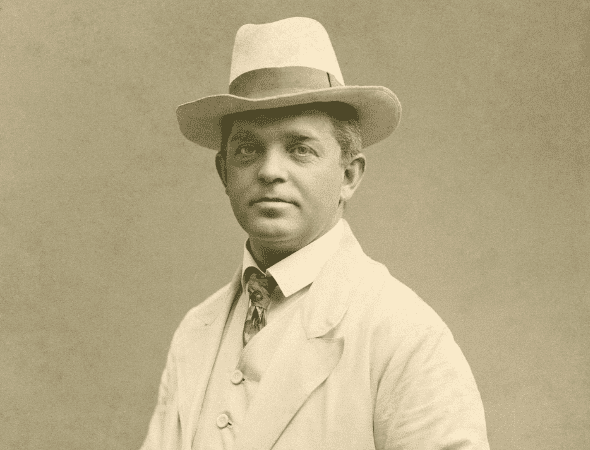NIELSEN: Clarinet Concerto
by Jeff Counts
Duration: 24 minutes.
THE COMPOSER – CARL NIELSEN (1865-1931) – Anyone interested in reading Carl Nielsen’s own thoughts about his incredible life in music must thank his daughter Irmelin. It was at her consistent urging that he offered his one and only autobiography for publication in 1927. It was a reminiscence of his early days called My Childhood on Funen. Also the birthplace of Hans Christian Anderson, Funen is Denmark’s third largest island and, in and around its fertile farmland, it boasts castles, stone age ruins and Viking relics. The book only covers Nielsen’s life up to his departure for Copenhagen to start his formal studies and, written from the distant perspective of the composer’s last years, it is only fair to acknowledge that it includes the occasional embellishment.

THE HISTORY – Contemporary to the writing of the memoir for Nielsen was a project meant to capitalize on the popularity of his Wind Quintet (1922). The intention was to create separate concerti for each of the instruments in the Copenhagen ensemble that premiered the work, but sadly for the horn, bassoon, and oboe players of the world, Nielsen never completed the set. Of the two concerti he did write, the work for flute came first. By then, the Copenhagen Wind Quintet had a new flute player and the composition process for Nielsen was slow. The reception of the Flute Concerto was very positive but, just as with the autobiography, Nielsen needed some prodding to continue on to the next one. Work on the Clarinet Concerto finally got underway in the spring of 1928, and he was finished with the manuscript by August. The dedicatee was Aage Oxenvad and, according to one flowery reviewer quoted in a biography produced by the Carl Nielsen Society, Oxenvad was a perfect match for the music Nielsen created. “Oxenvad’s sonority is in tune with the trolls and the giants,” the commentator stated, “and he has soul, a rough and stocky primordial force mixed with naïve Danish mildness. Certainly Carl Nielsen must have had his particular sound in mind while composing this Concerto.” Rough and stocky primordial forces and naïve mildness? This could have referred to Funen and Nielsen’s earliest memories there. And it’s not hard to imagine the composer thinking of his childhood, only recently published into the official record at the time, while he wrote the music for Oxenvad. Whether or not that is true, or even matters, Nielsen did contribute important, heartfelt works for wind musicians in his later years. In the words of scholar and biographer Robert Simpson, Nielson’s Flute Concerto is “the best there is” and the Clarinet Concerto “is the greatest since Mozart.” He’s right.
THE WORLD – Elsewhere in 1928, the Winter Olympic Games were held in St. Moritz with the Summer Games in Amsterdam, the first radio broadcast of the controversial nightly serial Amos ‘n’ Andy occurred, and the Catholic institution Opus Dei was founded.
THE CONNECTION – These performances mark the Utah Symphony premiere of Nielsen’s Clarinet Concerto.











